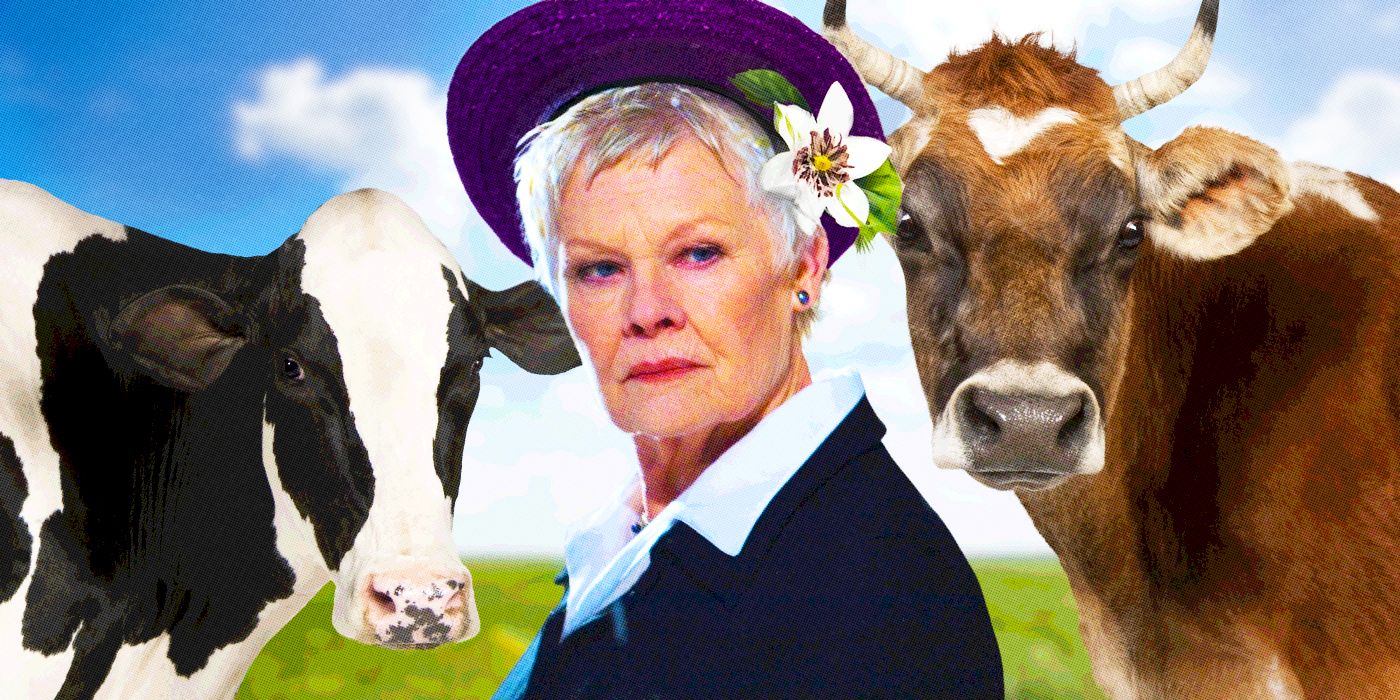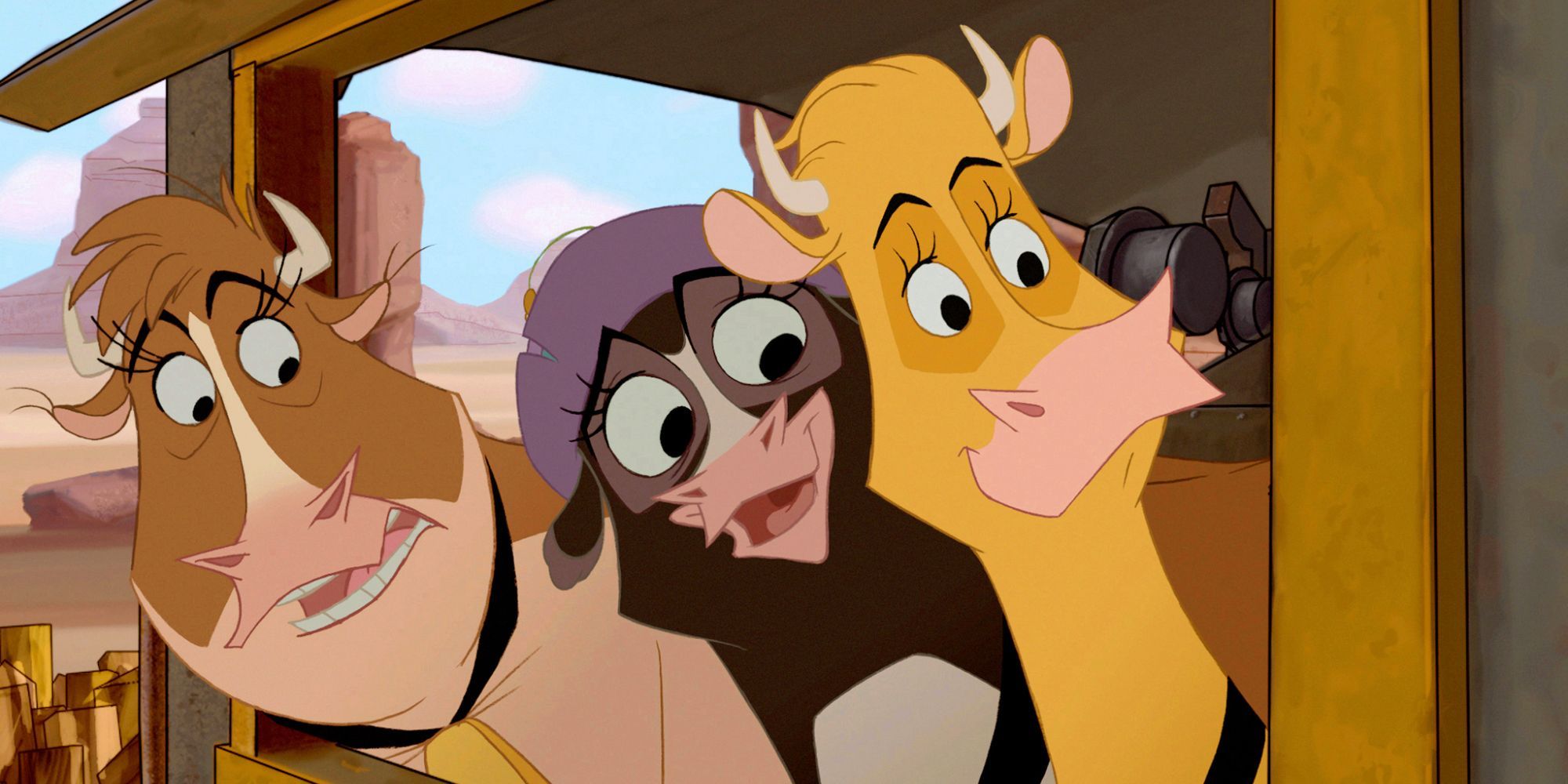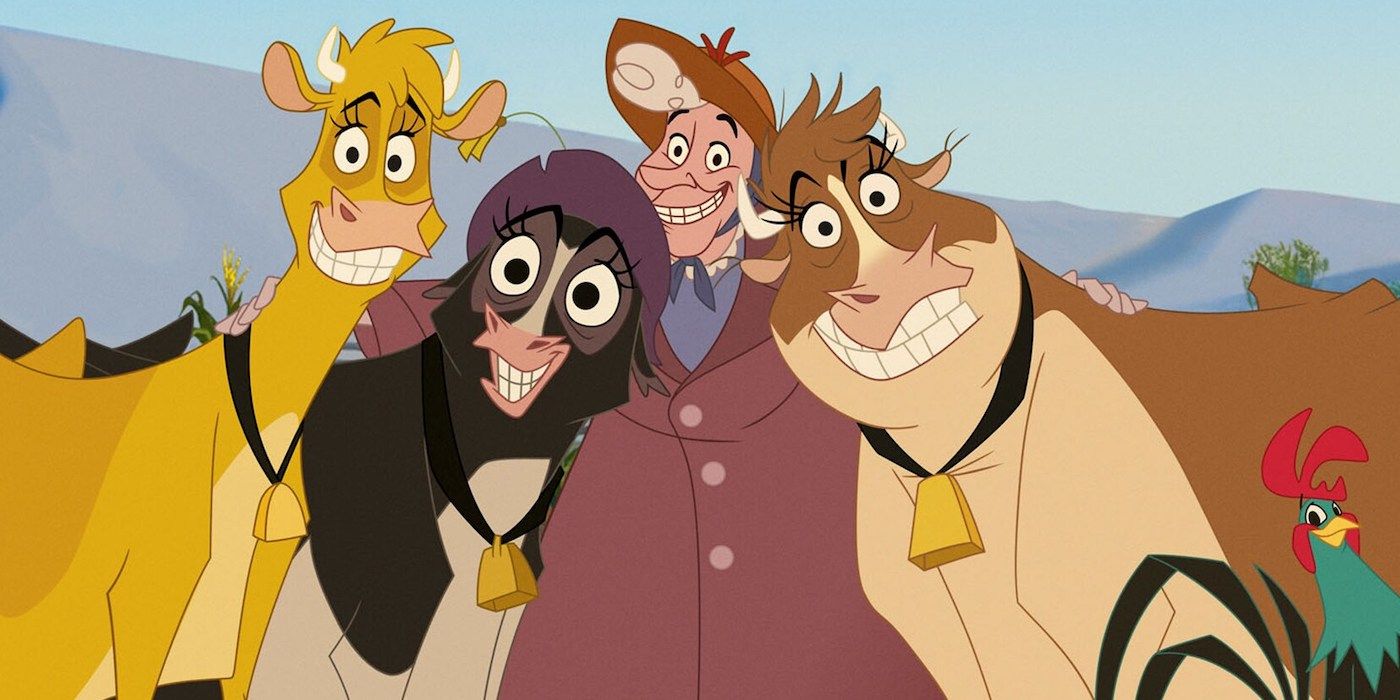The Big Picture
- Home on the Range was briefly known as the last hand-drawn animated film from Walt Disney Animation Studios before they transitioned to 3D animation. This decision led to the closure of animation houses and job losses for artists.
- The film is now considered obscure in Disney's library, with its only notable achievements being its rare Western storytelling and a silent cameo in an Oscar-nominated documentary.
- Home on the Range suffered at the box office due to its Western genre, an odd release date, and the rise of CG animation, which caused a negative perception of hand-drawn animation at the time. The film was ultimately forgettable and failed to capture audience's attention.
If Snow White and the Seven Dwarfs was “the one that started it all,” Home on the Range was (briefly) “the one that ended it all” for Walt Disney Animation Studios. Released in April 2004, this title was briefly most famous for being the last-ever hand-drawn animated title from this studio. 2D animation had put Disney on the map back in the 1930s, but Mouse House bosses at the start of the 21st century felt the art form was no longer relevant to modern moviegoers. With this development, animation houses were shut down, artists were put out of work, and Home on the Range suddenly became a way more historically important project than anyone could’ve imagined.
Two decades later, Home on the Range’s position in the Walt Disney Animation Studios canon is even weirder now that it no longer functions as the final hurrah for 2D animation. This division would eventually commission The Princess and the Frog and Winnie the Pooh before giving up on 2D forever. The most Home on the Range now has to its name is its place in history as a rare foray into Western storytelling for Disney’s animation division while its jackrabbit side character made a silent cameo in an animated sequence in the Oscar-nominated documentary Life, Animated. Otherwise, Home on the Range, despite having a stacked cast that included Judi Dench, has become an obscure entity in Disney’s vast library of animated movies.
What Is ‘Home on the Range’ About?
On an episode of the Look Back Machine podcast, Home on the Range director Will Finn confesses something grave: he doesn’t like Western movies. While he admits a fondness for the innate absurdity of Spaghetti Westerns, he freely admits that he just doesn’t like traditional Western movies. Despite that, he and John Sanford were the two men assigned to bring the troubled Home on the Range to the big screen. In figuring out just what they could accomplish with this particular motion picture., Finn eventually decided that Home on the Range would subvert the “lone gunslinger” archetype that dominates typical Western cinema. Here, figures who claim to work all by themselves are villains while individuals who are willing to cooperate with others save the day.
That provides the thematic backbone (or at least the closest thing this film has to one) for Home on the Range, which focuses on a trio of cows, Maggie (Roseanne Barr), Mrs. Calloway (Judi Dench), and Grace (Jennifer Tilly), who are determined to save the cash-strapped farm they call home. They eventually concoct a scheme to collect the bounty on the head of cattle rustler Alameda Slim (Randy Quaid), which should be enough cash to save their home. Now these bovine bounty hunters are off on an adventure that will bring them face to face with tempting yodeling and a cocky horse by the name of Buck (Cuba Gooding Jr.)
On that Look Back Machine podcast episode, Sanford notes that one story idea everyone involved in Home on the Range got really excited about was a preposterous way to give Alameda Slim some memorable motivation. Specifically, the notion was to have Slim steal all these cows so he could use them to charge into Washington D.C., and usurp the title of President of the United States. It was a wild villain scheme that sounded mighty entertaining…but it got shot down because George W. Bush (a Texan President many perceived as stealing an election) was in office at the time. Not wanting to rankle anybody politically, Disney brass shot that notion down, leaving Home on the Range with a weak villain and a serious lack of enjoyable silliness.
That abandoned concept sounds extra tantalizing given that Home on the Range’s final form is so unspeakably bland and forgettable. There’s just not much going on here, especially visually. Save for a psychedelic sequence showcasing how Slim uses yodeling to rustle cattle, the drab animation can’t realize much in the way of gorgeous shots out of the deserts and canyons Home on the Range’s story largely occupies. Many filmmakers have wrung unforgettable imagery out of these very same backdrops, but Home on the Range settles for taking the uninspired route when it comes to its animation. What a sharp disappointing contrast to those beautiful watercolor backgrounds in Disney’s Lilo & Stitch from just two years earlier. Between such forgettable animation choices and comedy that tries so hard to be funny yet fails to make the mark, Home on the Range is thoroughly forgettable. It’s rarely outright bad, but it also rarely captures your attention.
Why Did ‘Home on the Range’ Bomb at the Box Office?
Home on the Range might not be good, but plenty of other Walt Disney Animation Studios titles like Chicken Little or Pocahontas were also bad while faring way better at the box office. What led this particular title to capsize financially? Well, for starters, Home on the Range, was unquestionably a Western, a genre that has an erratic box office track record in the 2000s. Movies about spurs and cattle had a bit of a box office resurgence at the dawn of the 2010s thanks to True Grit and Django Unchained, but many other modern Westerns have flopped at the box office. This type of film can just be immediately off-putting to some audiences and Home on the Range didn’t have anywhere near enough charm to wrangle moviegoers dubious of seeing a Western feature in theaters.
Additionally, Disney gave Home on the Range an oddball release date over the first weekend of April. Most Walt Disney Animation Studios films up to that point had either been released in June or over Thanksgiving weekend. These timeframes had proved incredibly lucrative for the Mouse House and allowed titles like Aladdin or The Lion King to have legs for months. Home on the Range, meanwhile, was dumped with minimal fanfare in early April against a ton of other family movies (Scooby-Doo 2: Monsters Unleashed opened just one week before Range). Opting for this release date compounded plenty of other problems in Home on the Range’s release strategy, including going out into theaters just a few weeks before Shrek 2 was unleashed on the world. This family movie sequel was so highly anticipated that Home on the Range just couldn’t compete with all that hype.
Then there’s the simplest reason for Home on the Range flopping: the times, they were a-changin’. CG animation was a flashy new toy for audiences and studio executives, it was the medium that smash hits like Shrek, Ice Age, and Toy Story were realized. Meanwhile, the dawn of the 21st century saw a slew of action-oriented hand-drawn animated titles like Titan A.E., Sinbad: Legend of the Seven Seas, and Treasure Planet all flop hard. A ghastly reputation had begun plaguing all hand-drawn animated titles, including Home on the Range, and cursed the box office potential of these titles. Of course, as early as 2005 or 2006, flops like Valiant and Doogal would prove that computer animation was not an instant gateway to either box office success or audience acceptance (maybe it’s the story and characters, not the medium of animation that matter?)
However, circa. 2004, all the negativity surrounding hand-drawn animation inspired Disney to dump Home on the Range into theaters with no real fanfare. This was not a new animated family movie you had to see in the theater, but rather the final hand-drawn animated project before the Mouse House moved on to “better” things. In every respect, Home on the Range was the wrong movie at the wrong time. Worse, it wasn’t good enough on its own merits to endure long after eye-catching headlines about its box office woes had faded away. Other 2000s Disney Animation flops like Atlantis: The Lost Empire and Treasure Planet cultivated commendable cult followings after coming up short financially. By contrast, Home on the Range, even with the power of a Judi Dench voice-over performance, has faded into oblivion. Heck, thanks to the existence of projects like The Princess and the Frog, it can’t even carry the distinction of “the one that ended it all” anymore.



